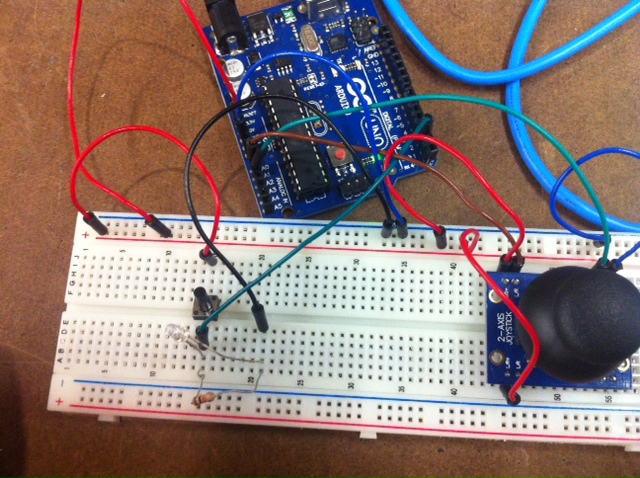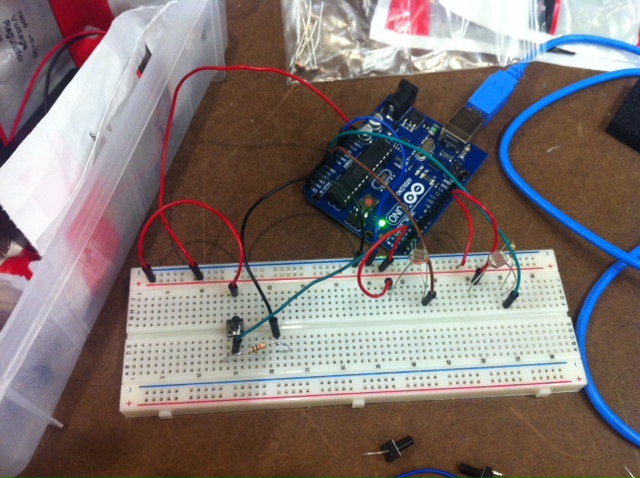It has been a fun week of labs. At one point, I thought I fried my Arduino because it stopped responding, but a reset seemed to do the trick.
I decided I like to put LED indicator lights on my breadboard. For example, I’ve been putting an LED after the Mouse On switch. First it’ll go to Digital Input, then LED small leg (cathode), then resistor 10k (brown, black, orange). LED big leg (anode) and resistor connect to ground.
I was confused by Lab 2 part 2 where we were prompted to map(analogValue, 0.0, 5.0) with only three arguments. Don’t we always need five? I got an error until I added two more values, but wasn’t sure what top put there cuz the values I added shaped my mapping results.
Q: Why do we use delay between readings?
Q: If you make a led digital output pin an “input” will that fry an LED?
I’m inspired by motion with photoresistors.
I also got a joystick that connects with power to both + inputs, analog output from L/R and U/D, and output to ground. So 5 pins to get it working properly.
 Notice the LED next to the mouse-on switch (to the left). Wish my joystick had a ‘select’ button, it just has two potentiometers.
Notice the LED next to the mouse-on switch (to the left). Wish my joystick had a ‘select’ button, it just has two potentiometers.
///Some notes from this week’s readings:
Donald A. Norman – The Design of Everyday Things
- visibility, clues, feedback on action. “natural design”
- if it’s hidden, it’s invisible, and might as well not exist. Example: the lost telephone hold function.
- if unused functions, “purpose of design is lost”
- psychology of how people interact with things
Afford “is for” – like the affordances of a chair: it’s for carrying weight, it’s for sitting.
Constraints & Mappings
Principles of Design: 1.) Visibility 2.) Provide a Good Conceptual Model (to predict effects of actions)
“a device is easy to use when there is visibility to the set of possible actions, and the controls display natural mappings”
Conceptual Model – Designer’s Model vs. User’s Model’ vs System Image — make visible
“Emotional Design” is Norman’s response to people who thought he didn’t care how things look, just how they function. He describes three teapots in his collection, including one that is impossible to use, but he loves all three anyway. He references studies that show how our gut emotional response impact our interactions. Emotion is primal. If something is unnatractively designed, we’ll focus on it more and maybe even figure out how to use it if necessary, unless we’re stressed out (follows a U-curve). If we are attracted to an object, we’ll enjoy using it more and we’ll be more playful in our interaction.
Physical Computing’s Greatest Hits (and Misses) is a great overview of some of the ways to use the tools we have learned so far. I love the Megatap 3000.
